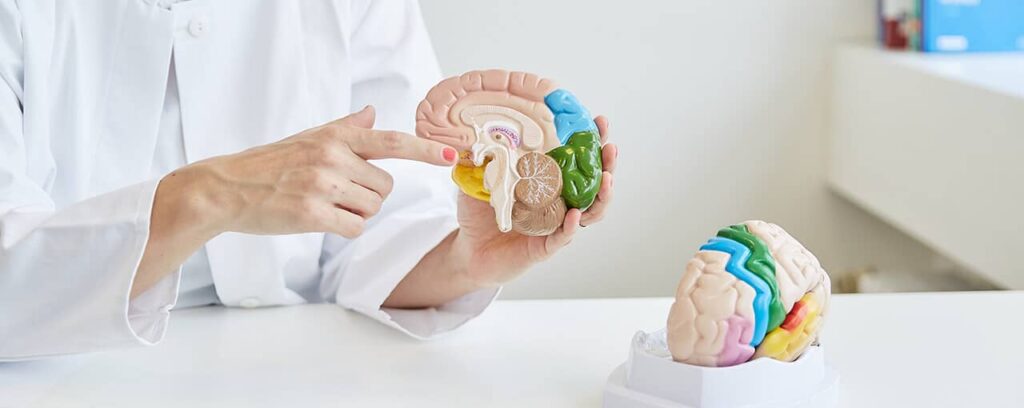Parkinson’s Disease and Other Movement Disorders
The typical symptoms of Parkinson’s disease are muscle stiffness (rigor), tremor and slowing of movement (akinesia or hypokinesia). If these occur, it must be clarified by a detailed examination whether it is a Parkinson’s disease in the narrower sense (so-called Idiopathic Parkinson’s Syndrome or Morbus Parkinson) or one of its variants. In individual cases, tremor (so-called tremor-dominant type) or rigidity (so-called akinetic-rigid type) may be in the foreground. In Parkinson’s disease, other symptoms such as gait and stance unsteadiness, depression, disturbances in blood pressure or temperature regulation, or memory disorders may occur in the course of the disease.
Affected people are usually elderly, and only very rarely do the first symptoms appear before the age of 40. The disease is due to premature aging of circumscribed brain areas that are of great importance for movement control (so-called neurodegenerative disease). The causes are complex and only partially understood to date; genetic factors play a role in some forms.
What can we do in the case of Parkinson’s disease?
In a detailed conversation with you and, if necessary, with your relatives, we clarify their complaints. The most important thing is the neurological examination detecting your symptoms. It is important to identify possible other causes for the movement disorder at an early stage. In this case it is symptomatic Parkinson’s syndrome. The symptoms are similar, but the causes are different from those mentioned above. This should be clarified by all means and if possible in the early phase by appropriate technical examinations (magnetic resonance tomography, EEG, etc.) and specific laboratory tests. Under certain circumstances, this may result in a completely different therapeutic approach.
Therapy of Parkinson’s Disease
Parkinson’s disease can usually be treated quite well with medication, although the overall course cannot be stopped completely. Today, extremely effective and well-tolerated drugs are available, but they must be selected and dosed very individually. During the course of therapy, continuous medical monitoring is advisable. Targeted physiotherapy and sports medicine is very important from the outset. Depending on the need, other therapy methods should also be used, e.g. speech therapy or occupational therapy.

